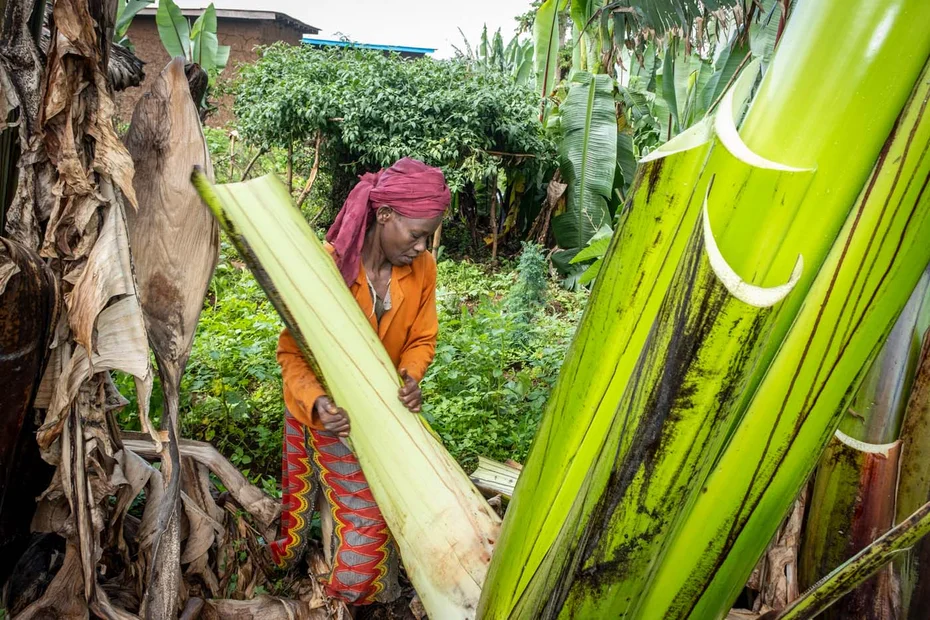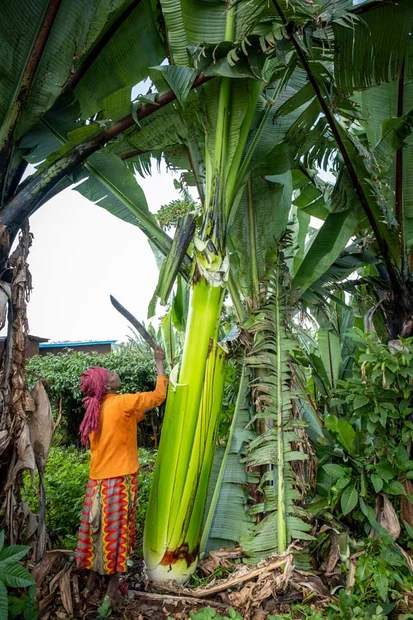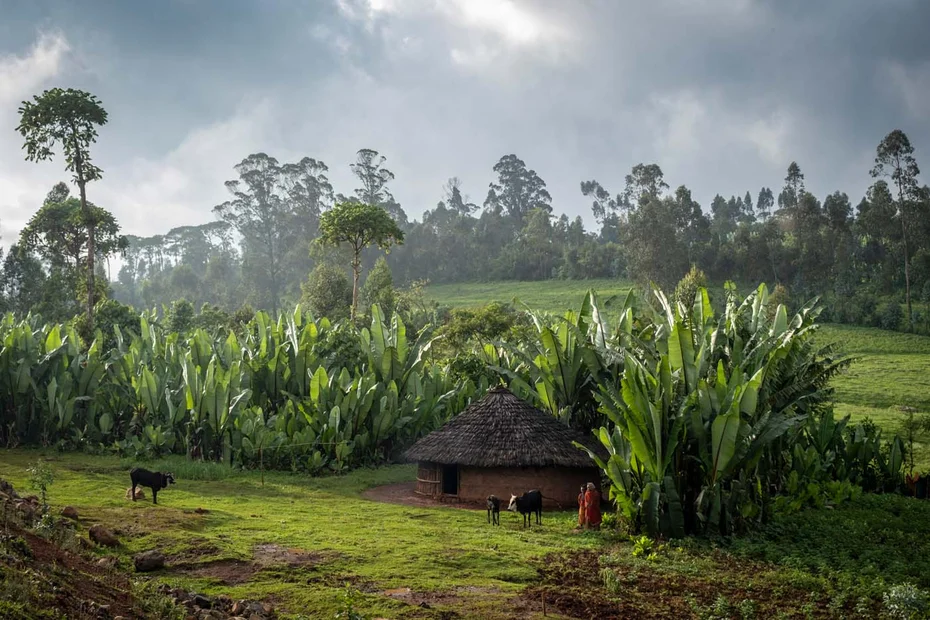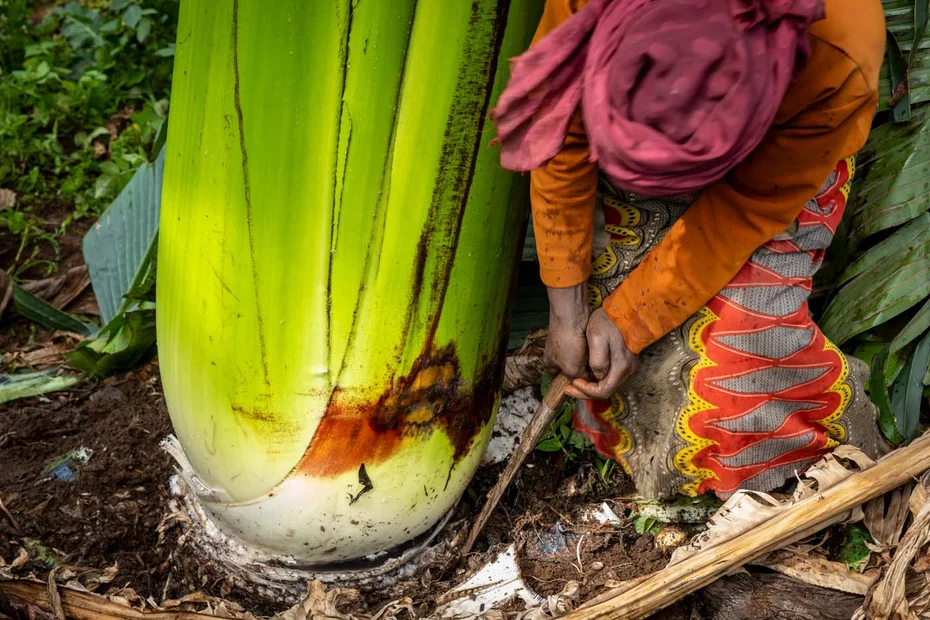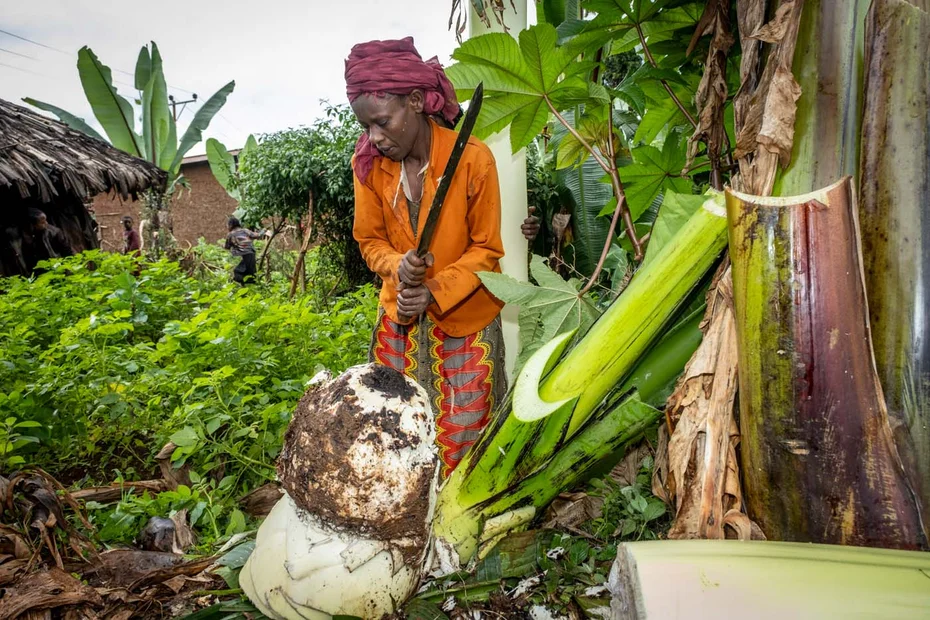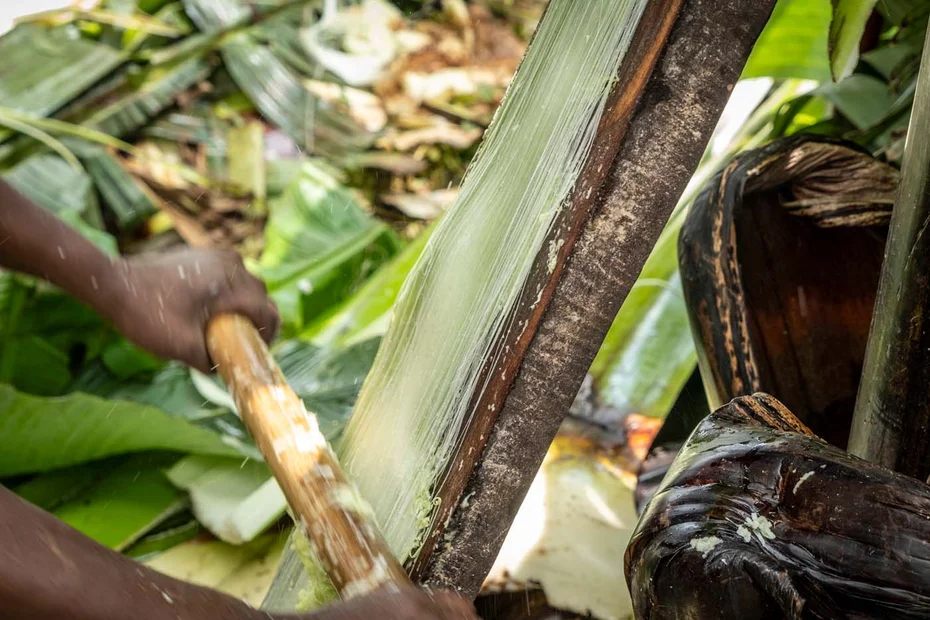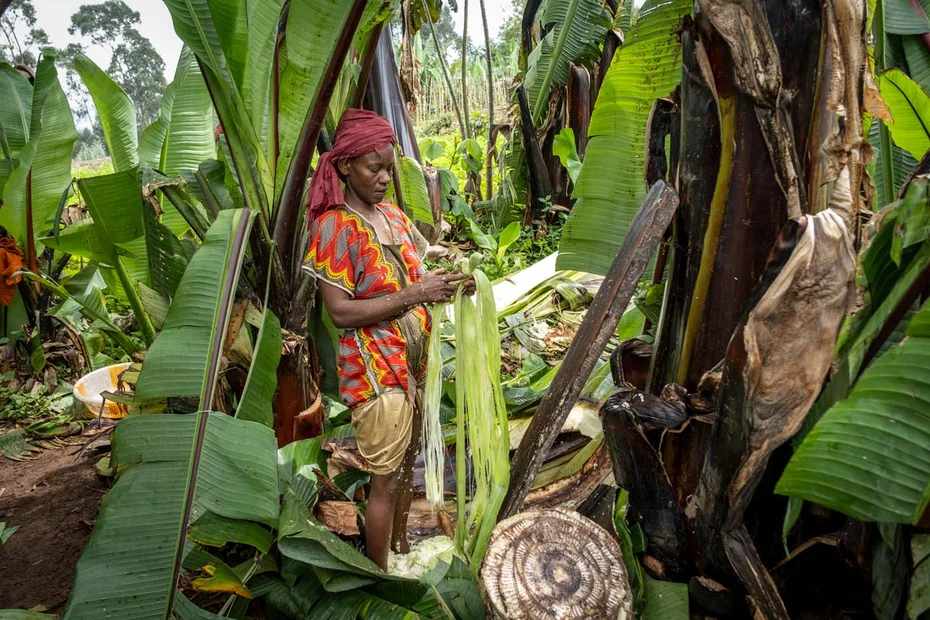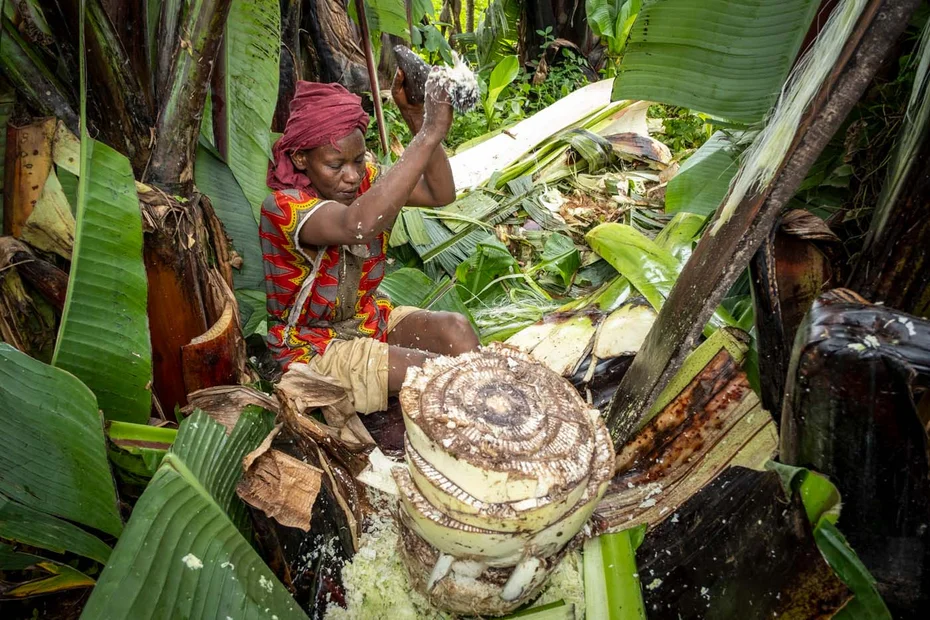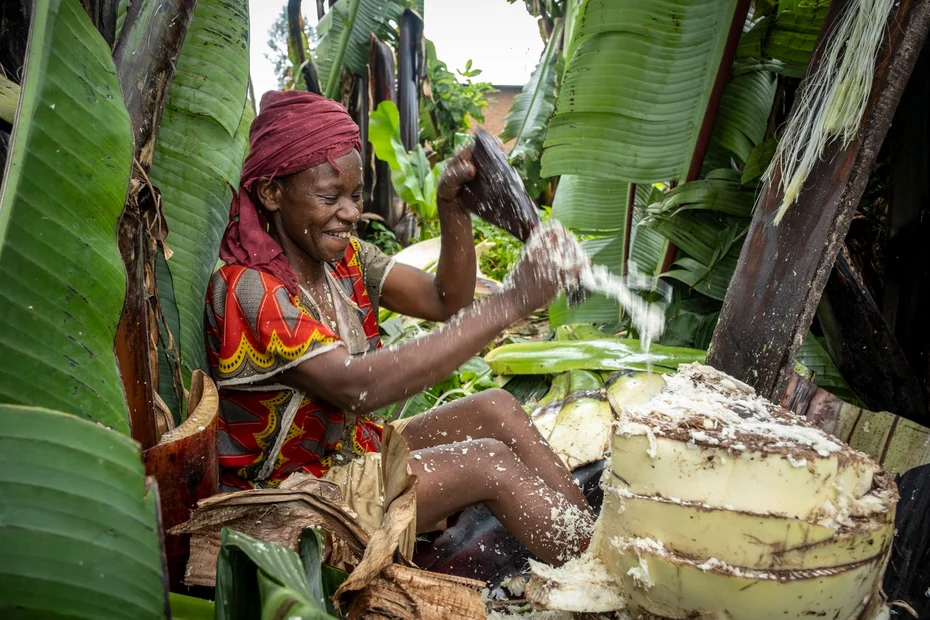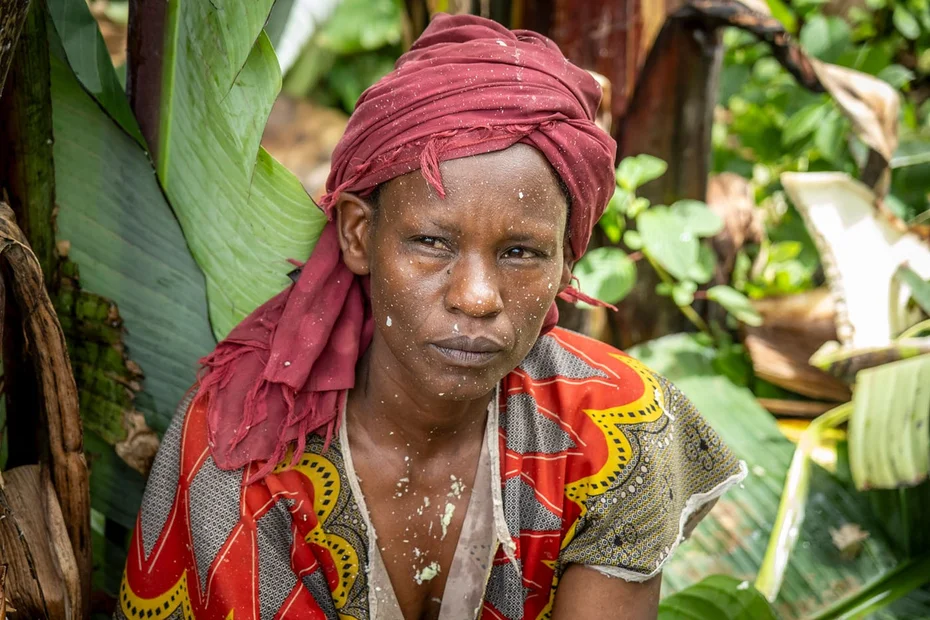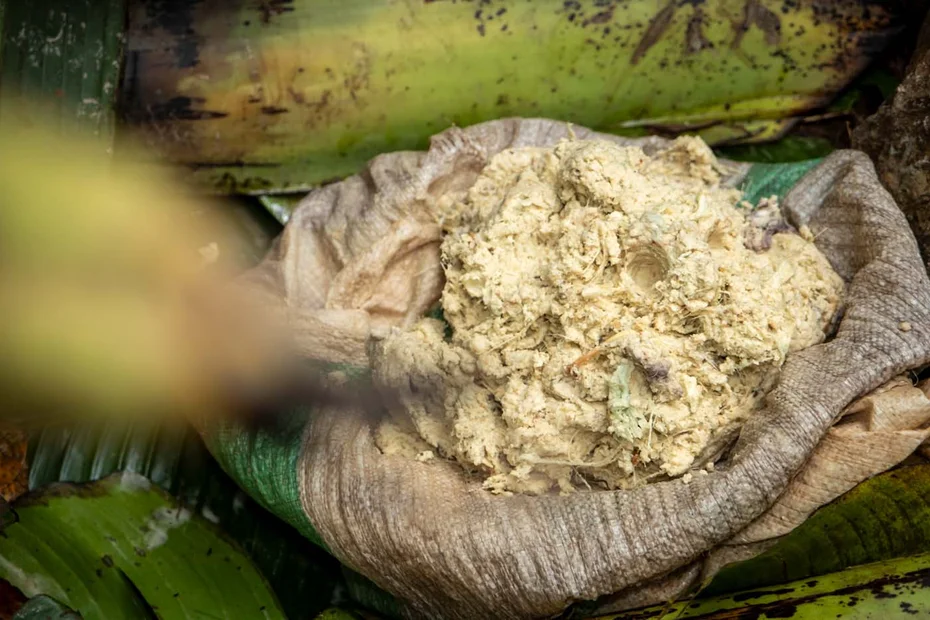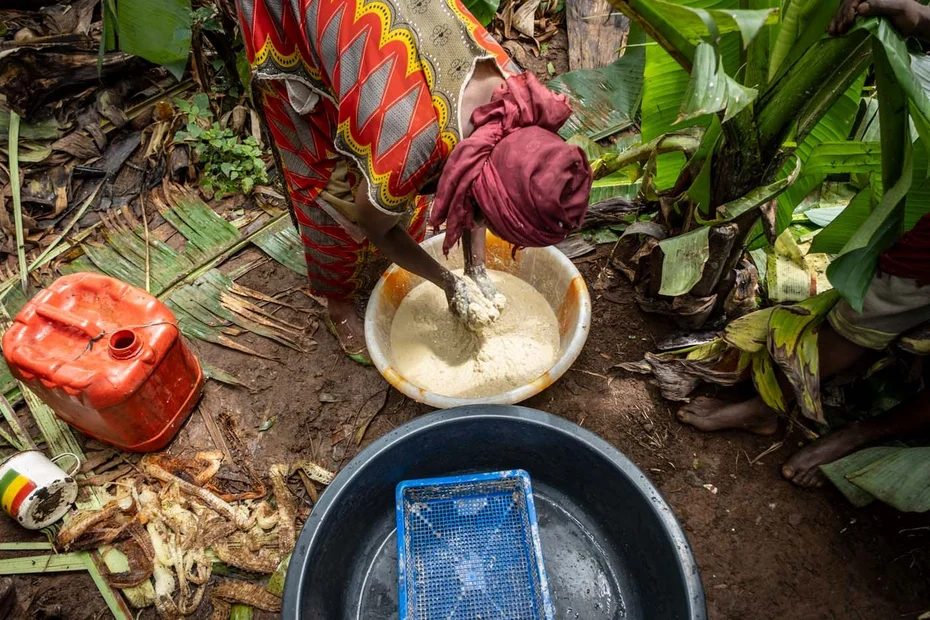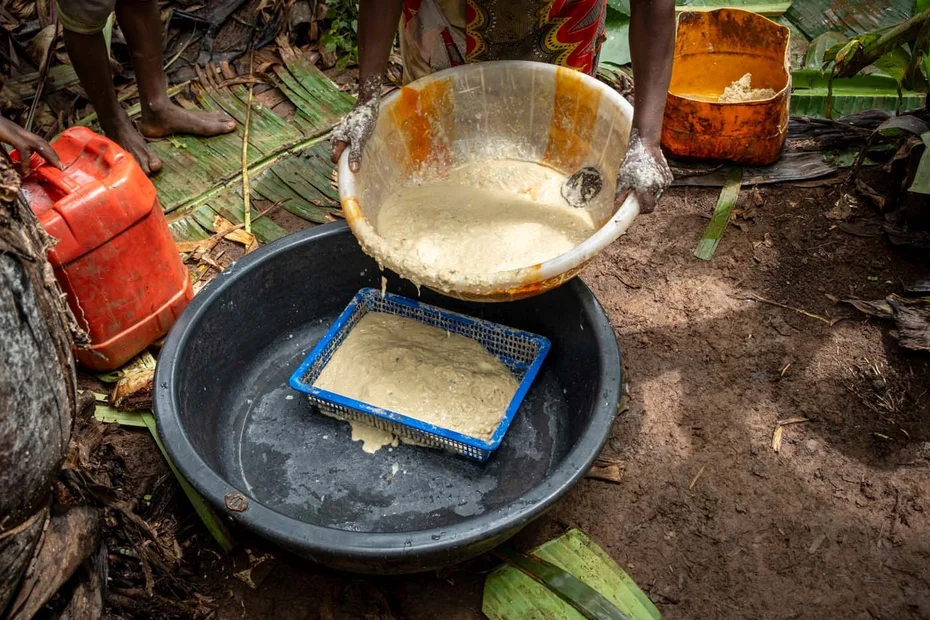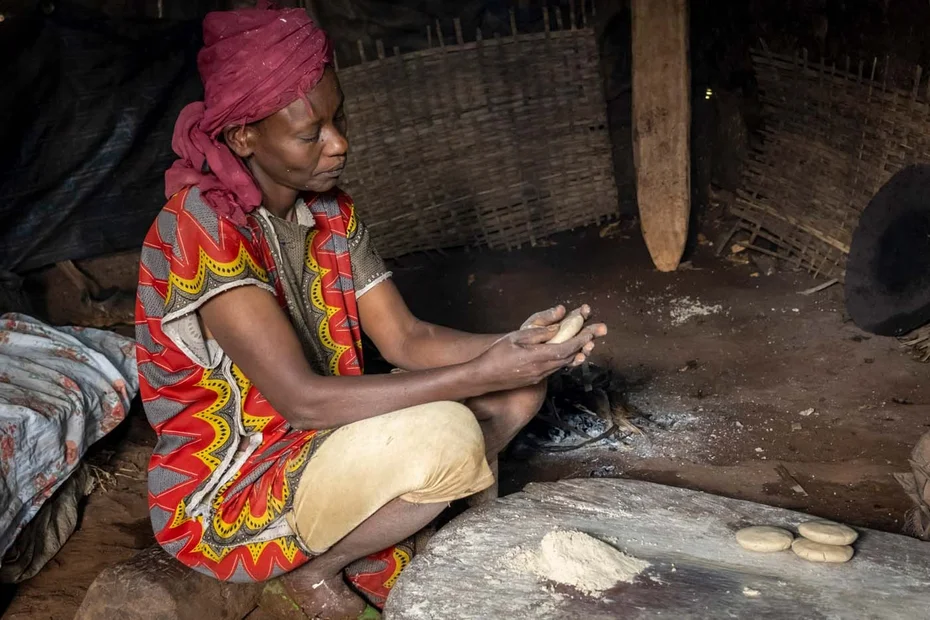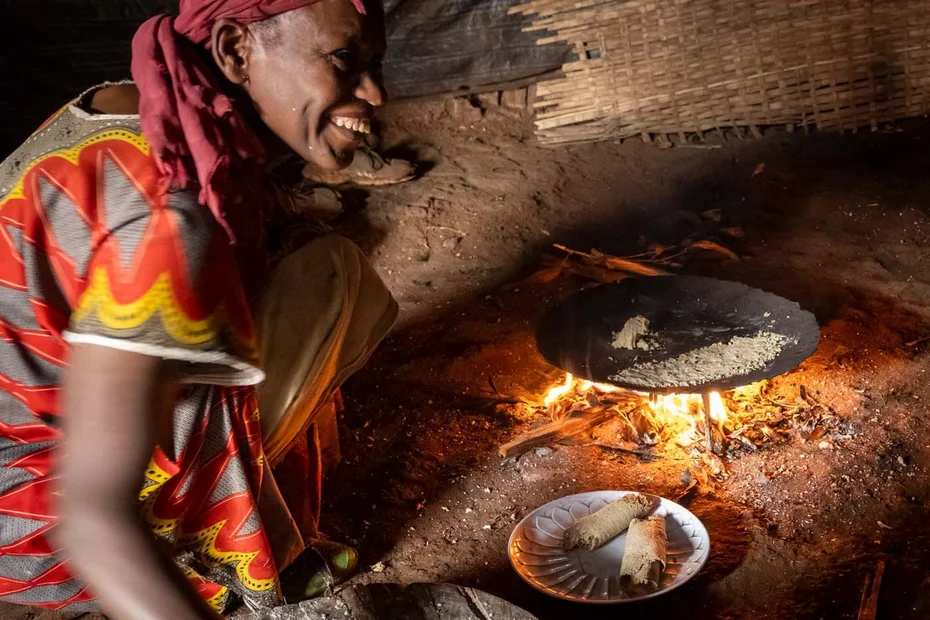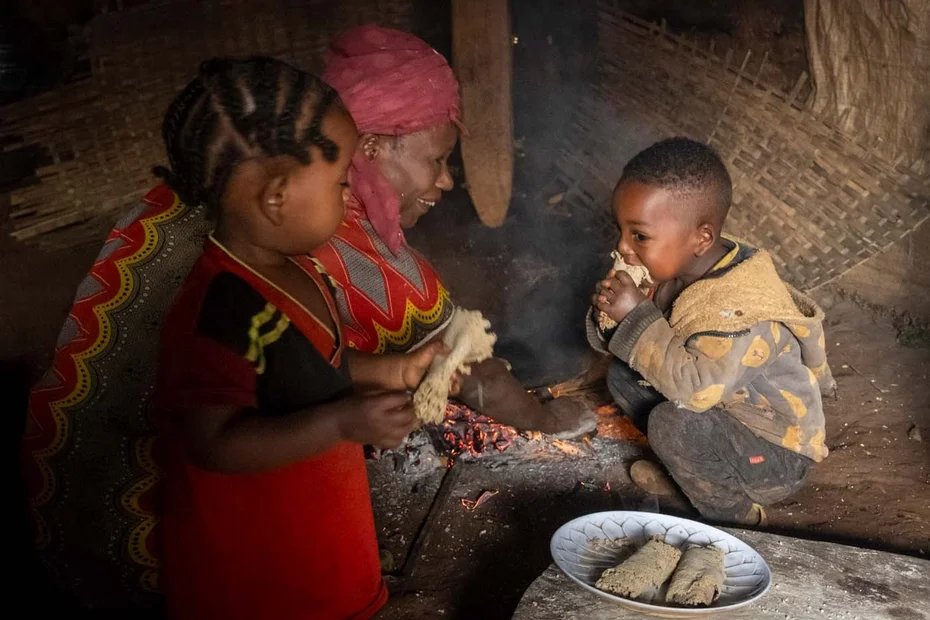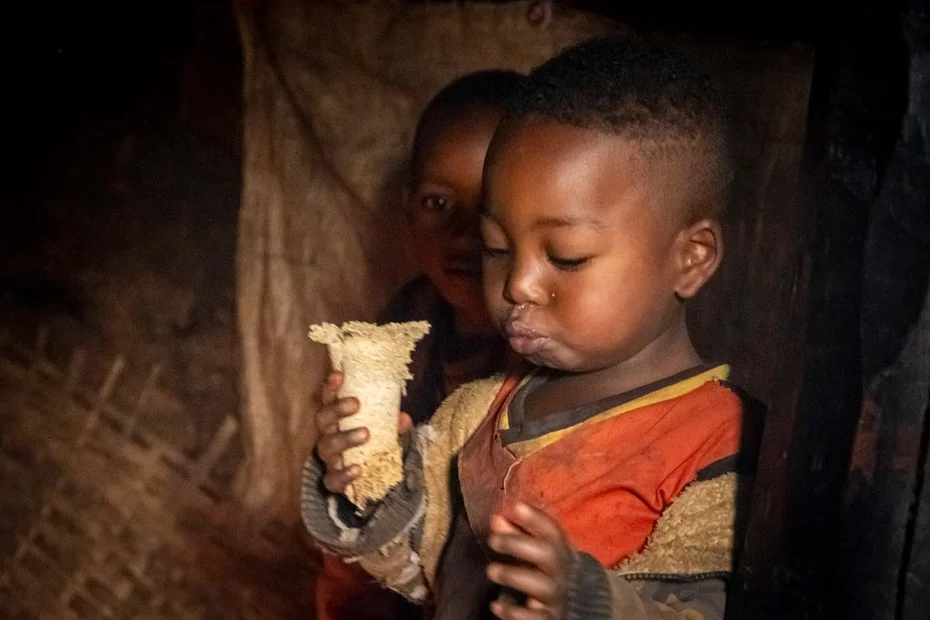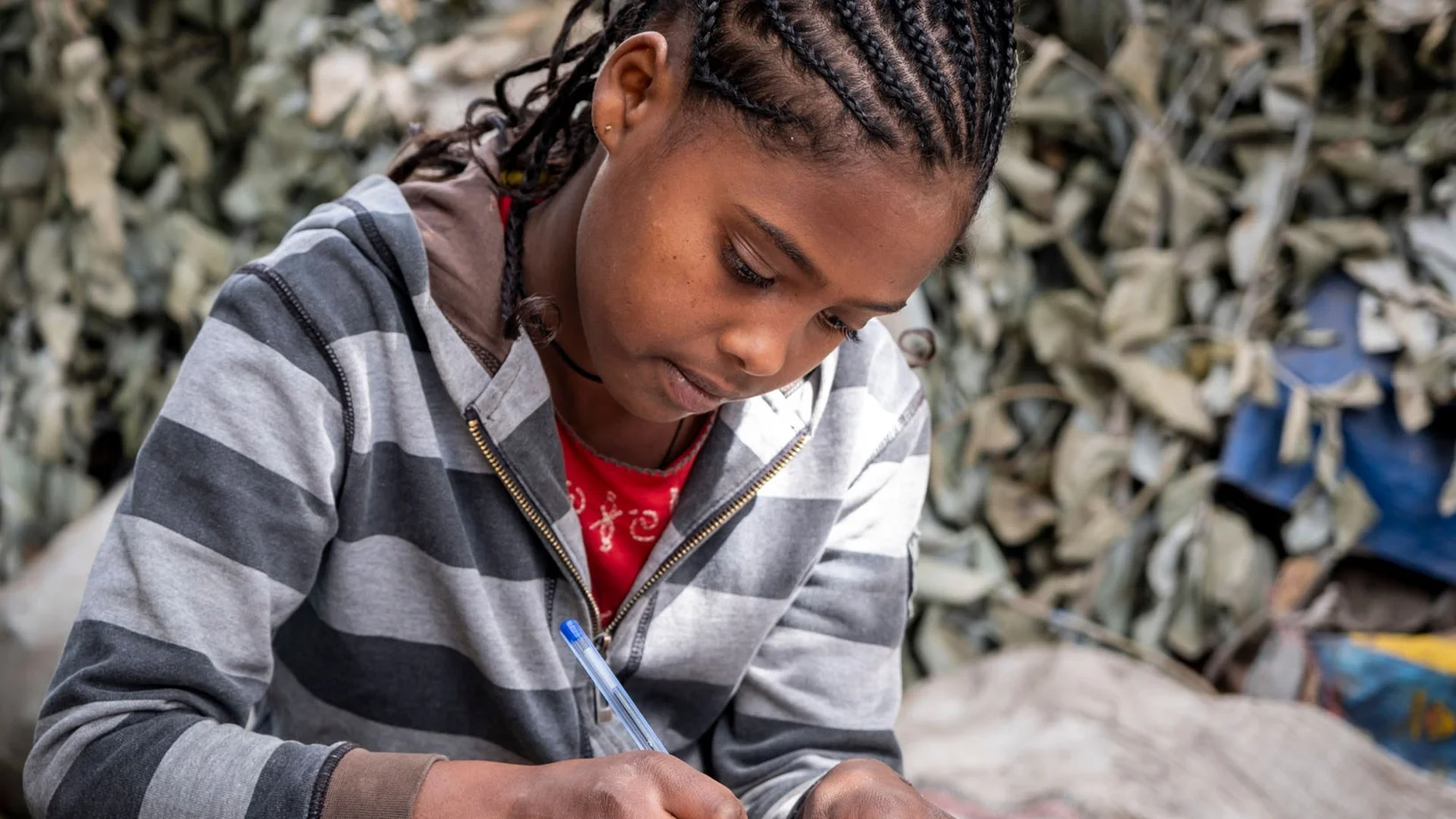In southern Ethiopia, the Ensete is also called the "plant against hunger". People consider the Kotcho, which is made from the plant, to be a superfood. This food ensures the survival of millions of people.
This menu would fit on a postage stamp. In the morning there is a pancake made from Kotcho dough. Lunch is skipped, as always. "We have to manage our supplies," says Worke Zeru, the housewife. In the evening there are two round, flat rolls per person, also made from Kotcho. With a handful of boiled cabbage: that's what the menu looked like yesterday and again today. Tomorrow it will be no different. On good days, which are rare, the family also eats a few potatoes with it.
Like millions of people in southern Ethiopia, Worke Zeru’s family mainly relies on a food that the rest of the world has hardly ever heard of: “Only God knows how we would survive without kotcho!” says Worke Zeru.
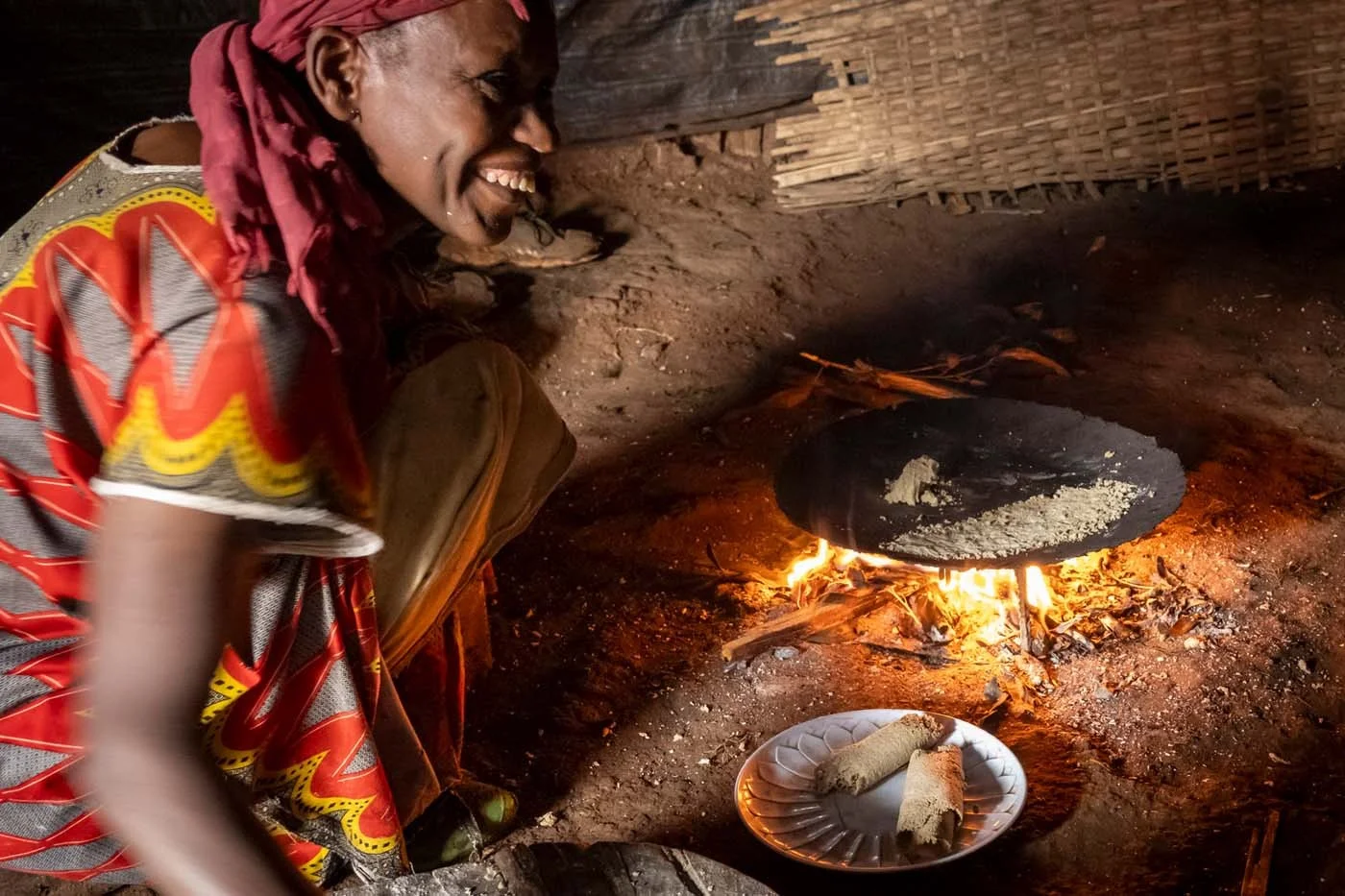
The 43-year-old is crouching in her round hut, the roof made of branches, twigs and grass is blackened with soot. Acrid smoke rises from the small fire on the ground. She is kneading dough on a wooden board. This is Kotcho, made from one of the Ensete plants, whose leaves are a lush green behind the hut and stretch an astonishing seven to nine meters high.
Everywhere in Worke Zeru's home district of Hambela Wamena, you can see crooked huts in the rust-brown earth, surrounded by the lush Ensete ventricosum that shoot up into the sky. The giant herb is only used as a decorative accessory in the greenhouses and botanical gardens of Europe, which is why it is also known here as the "pseudo-banana", "Abyssinian banana" or "false banana", as the layman easily confuses it with the fruit plant. The Ensete is neither a shrub nor a tree. It has no woody trunk, despite its enormous height. The plants derive their stability from their leaf sheaths, which lie close together and form a pseudo-stem - and the basis for survival for around 24 million people in southern Ethiopia.
Extracting the nutritious Kotcho (pronounced "kocho") from the root tuber and the leaf sheaths is very strenuous work. Worke Zeru uses the early morning hours for this, when the temperature is still pleasant. With the cleaver, she chops off the leaves at a height of two meters. Then she exposes the individual leaf sheaths and, with the help of the machete, the root tuber. This takes half an hour.
Worke Zeru is a small, petite woman, but she often carries the leaf sheaths and the heavy tuber to the scraping place alone. Sometimes a daughter or daughter-in-law helps her. First, the farmer's wife attaches the individual leaf sheaths to a slanting board. Using a wooden tool, she scrapes off the carbohydrate-rich plant tissue with rhythmic movements. Soon, sweat is beading on her face, and she breathes in and out like a weightlifter until only the fiber remains of the leaf sheath remain - this can later be used to make strong ropes for farming or to tie roofs together. The valuable material now lies on the spread-out Ensete leaves on the ground: Kotcho, the starchy pulp of the "false banana."
The question arises as to why men don't do this hard work. "My husband has a broken shoulder after an accident," says Worke. But even if he were healthy, she would never ask him for help; that would be unthinkable. She doesn't want to become the laughing stock of the village community. "That's our culture," she says. "The men take care of planting and weeding in the Ensete gardens, we women are responsible for preparing the food."
After the leaf sheaths, it's the turn of the tuber. Worke's tool has a jagged tip that looks like a gear. She uses it to chop up the huge tuber. Her biceps flex, her breath whistles, and soon she is covered in whitish plant parts. The pile of valuable pulp on the ground keeps getting bigger. Her daughter and daughter-in-law have already prepared a small pit a little further in the garden and lined it with ensete leaves. The pulp is placed in the pit and covered with more leaves. The kotcho is now allowed to mature in this pit for 20 to 30 days, with microbiological help: to speed up the fermentation, the farmers' wives add some ensete mash that was prepared a few days earlier. A Dutch study found up to 29 different cultivable microorganisms involved in the fermentation of the pulp, including 12 yeast species and 17 lactic acid and other bacterial species. The yeasts and bacteria unlock the nutrients and ensure shelf life and taste.
Clever housewives like Worke Zeru have prepared the carbohydrate-rich mass in several holes in the ground on different days so that they can bake at any time. Now Worke takes a portion of sufficiently fermented pulp out of the pit to wash it: using water, she rinses out any fibrous parts. Then Worke wraps the mash in Ensete leaves again and places it under a heavy stone. This squeezes out the excess liquid. After three hours, the Kotcho mash can then be made into pancakes and bread in the hut.
At 43, Worke is already a grandmother; she married at 16, like many poor girls here. Granddaughter Anany and grandson Soressa, both around three years old, toddle around the open fire in their round hut, grumbling impatiently until the flatbreads are baked. With pointed fingers, Worke takes them from the fire, blows on them, and gives them to the children. The whining stops.
The Kotcho products taste very similar to flatbreads made from grains, but are a little sour. Kotcho is rich in carbohydrates, and this is the only food that Worke's family can use to meet their daily calorie needs. Through fermentation, Kotcho develops probiotic superfood properties, it promotes healthy intestinal flora and supports digestion. But it is important for the people of southern Ethiopia above all because it protects them from severe hunger. It can be stored for a long time without spoiling, which makes it a reliable source of food in times of food shortages - and for most families this lasts around six months. Important foods such as corn, barley, beans and chickpeas are harvested from October onwards, and the small harvests only last for a few months. Kotcho becomes all the more important when other supplies are used up.
But kotcho is poor in protein. This is probably why the children in Hambela Wamena often seem too small for their age: supplementing them with protein-rich foods consumed regularly would be important to ensure a balanced diet. But pulses are expensive on the local markets.
After the pancakes, Worke forms rolls from the kotcho dough and bakes them too. She works quickly, and you can tell she wants to finish. "I have to go back out into the garden," she says. "After the freshly washed kotcho, I want to check whether the stone is squeezing out the liquid properly."
The project
In Hambela Wamena , Menschen für Menschen is trying to ensure food security for the population. In addition to livestock farming and grain cultivation, the foundation also promotes the cultivation of Ensete perennials with training and seedlings. 500 families receive training and 300 seedlings each. To improve the supply of proteins, Menschen für Menschen supports the cultivation of pulses. In training courses, small farmers are informed about healthy nutrition.

